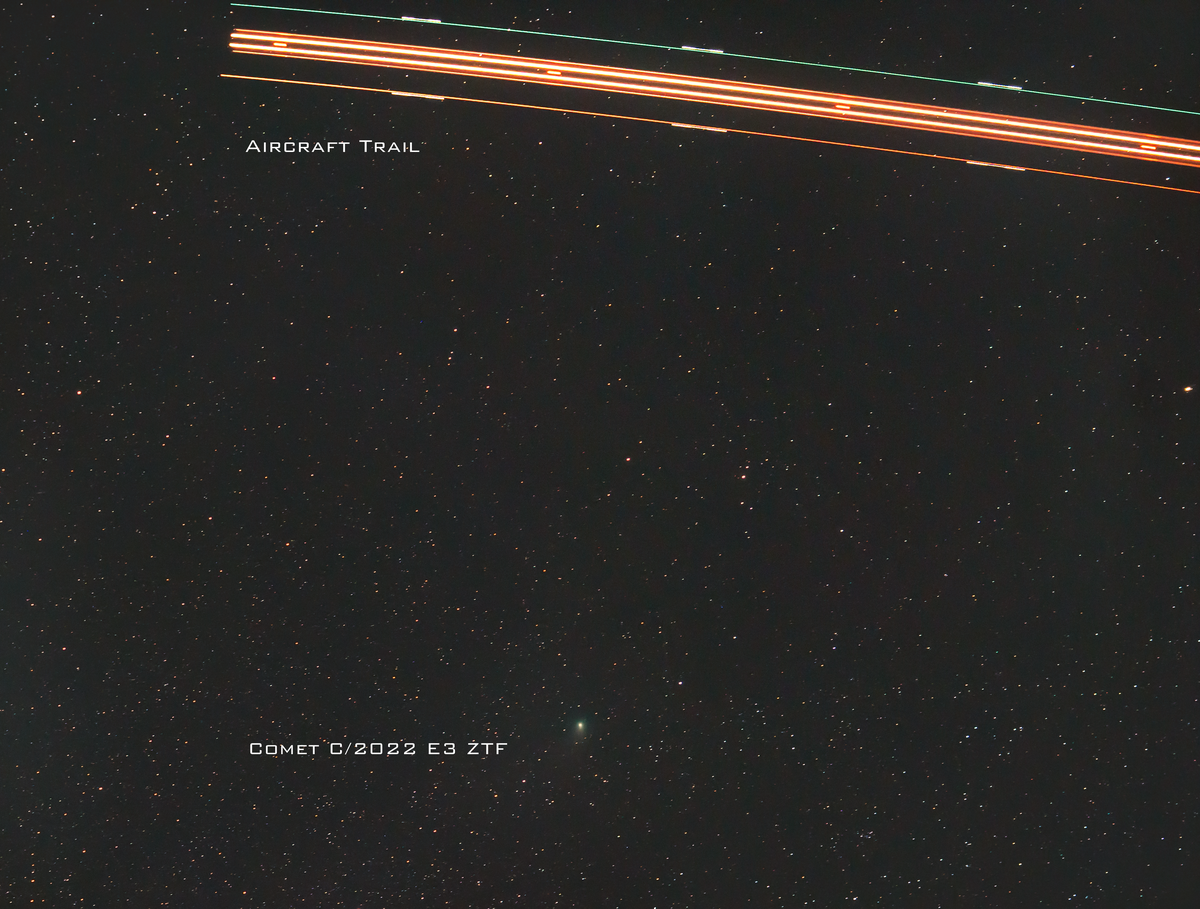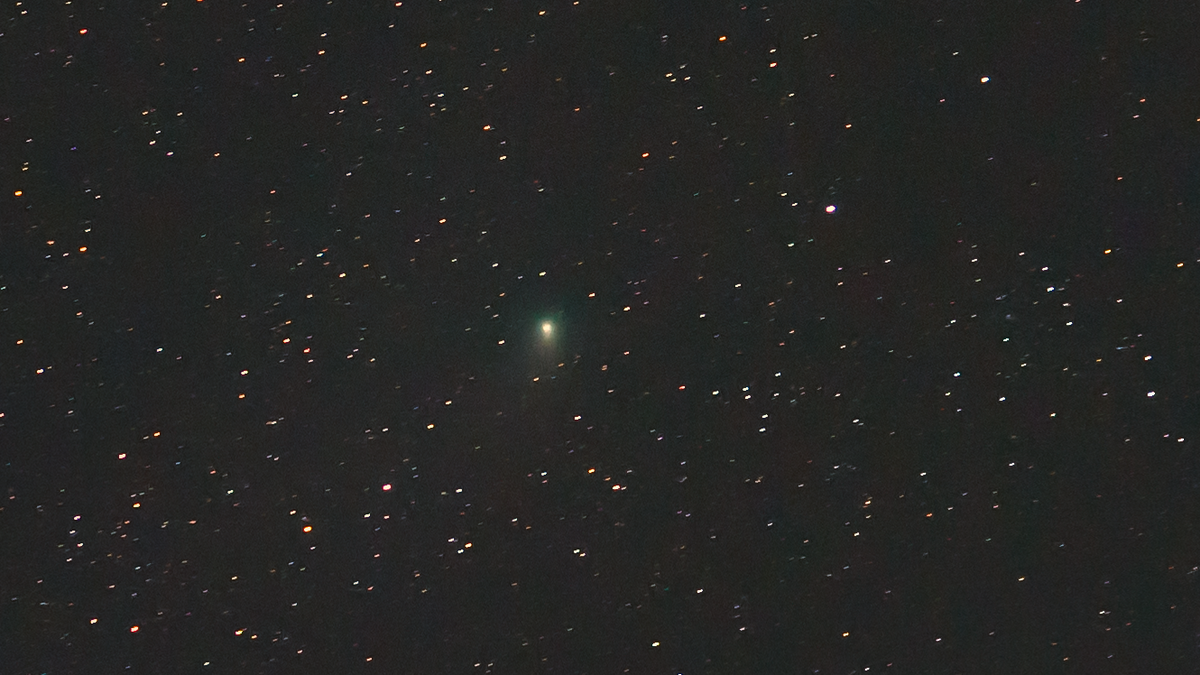[ad_1]

The image of C/2022 E3 (ZTF) captured by LPSC scientists Fahd Bin Abdul Hasis and Kiran Mohan from Karakulam, Thiruvananthapuram, on Tuesday evening.
After cloudy skies left them dejected several evenings this month, two astrophotography enthusiasts from the district finally succeeded in snapping photographs of a rare visitor — the ‘green comet’ C/2022 E3 (ZTF) which is on its closest approach to Earth in about 50,000 years.
Fahd Bin Abdul Hasis and Kiran Mohan, scientists at the Liquid Propulsion Systems Centre (LPSC), an Indian Space Research Organisation (ISRO) facility, took several snaps of the comet C/2022 E3 (ZTF) on Tuesday evening when finally the sky cleared.
Ever since C/2022 E3 (ZTF) began its once-in-several-lifetimes visit, the duo, who pursues astrophotography as a passionate hobby, has been keeping a lookout for it from Enikkara, Karakulam, where they live. ‘‘We took a few photos on February 3 and 5, but they were not that good as the sky was cloudy. On Tuesday [February 7], we had a clear sky, so we got some good pictures between 7.30 p.m. and 8.30 p.m.,’‘ Mr. Hasis said.
The long-period comet’s movement is in a roughly northeast to northwest direction. Once the moon rose bright, Mr. Hasis and Mr. Mohan had to discontinue their tryst with the comet. It’s hard to spot C/2022 E3 (ZTF) with the naked eye and the difficulty is compounded by light pollution over urban areas. One would need a pair of binoculars or a telescope to spot it, according to Mr. Hasis.
Comet C/2022 E3 (ZTF) was discovered by astronomers at the Zwicky Transient Facility in the U.S. in March last year. It was dubbed ‘green comet’ due to its greenish tinge. The comet made its closest approach to the sun on January 12 this year and to the earth on February 1.

Another photo of comet C/2022 E3 (ZTF) taken by Fahd Bin Abdul Hasis and Kiran Mohan which also shows an aircraft trail.
‘’The comet is near the star Capella in the constellation of Auriga. By February 11, it will be in the direction of Mars when we look from Earth and then it will move into the Taurus constellation,’‘ he said.
For taking the photos, the duo used a Nikon Z 6II camera fitted with a Samyang 13 mm f/2 lens, plus an iOptron SkyGuider Pro star-tracker for compensating for the earth’s rotation and preventing ‘star trailing’ due to long exposure.
In July 2020, Mr. Hasis and Mr. Mohan had a similar experience with cloudy skies when they had to wait several days to take snaps of the long-period comet NEOWISE.
[ad_2]
